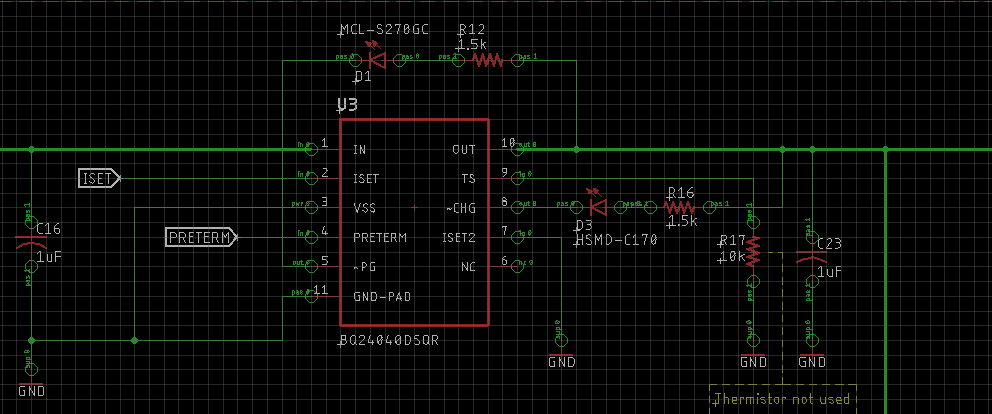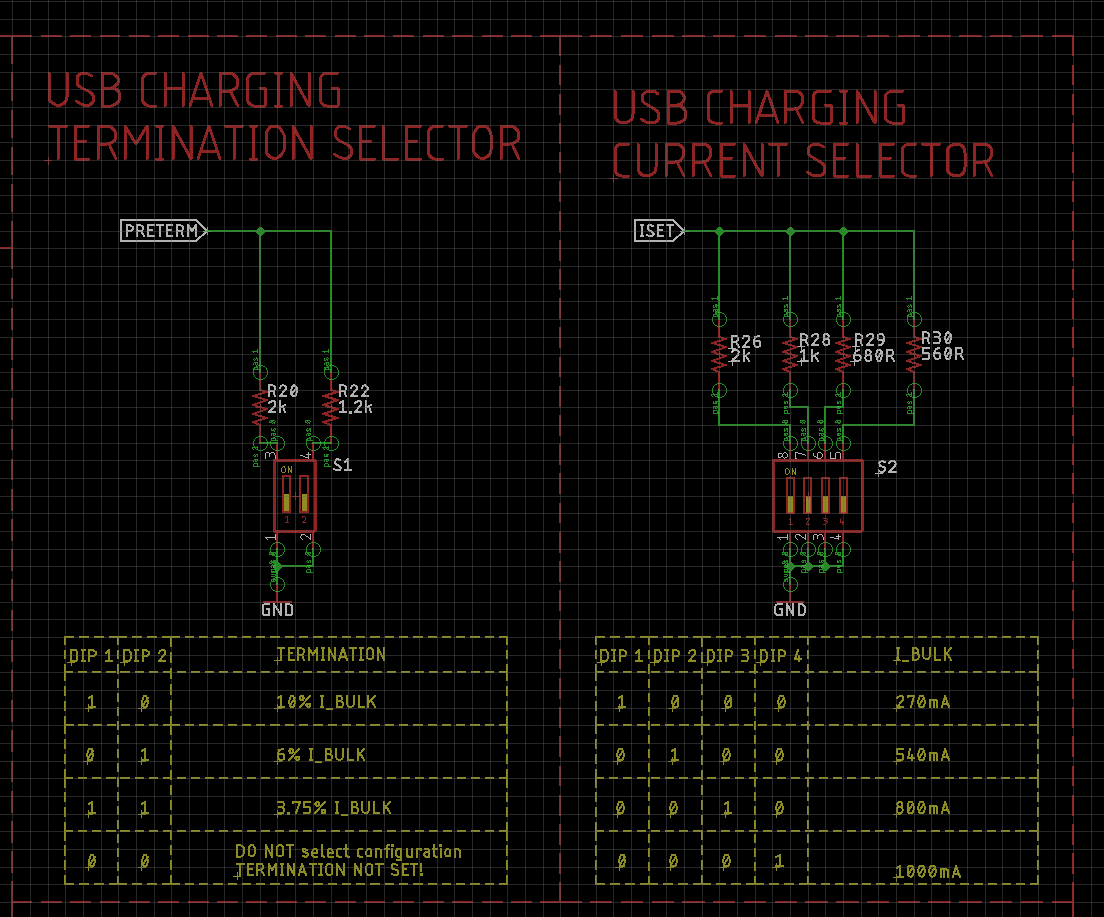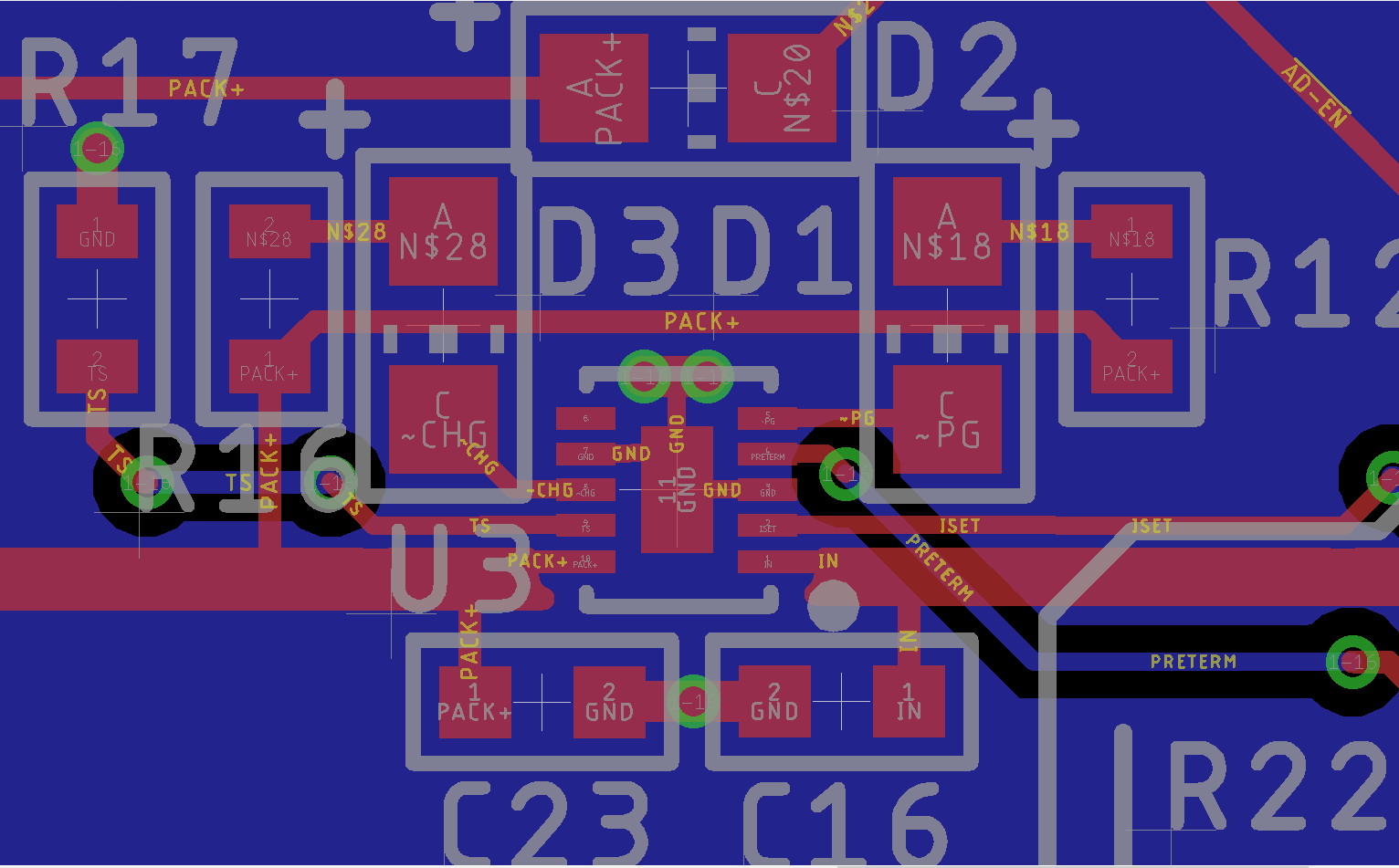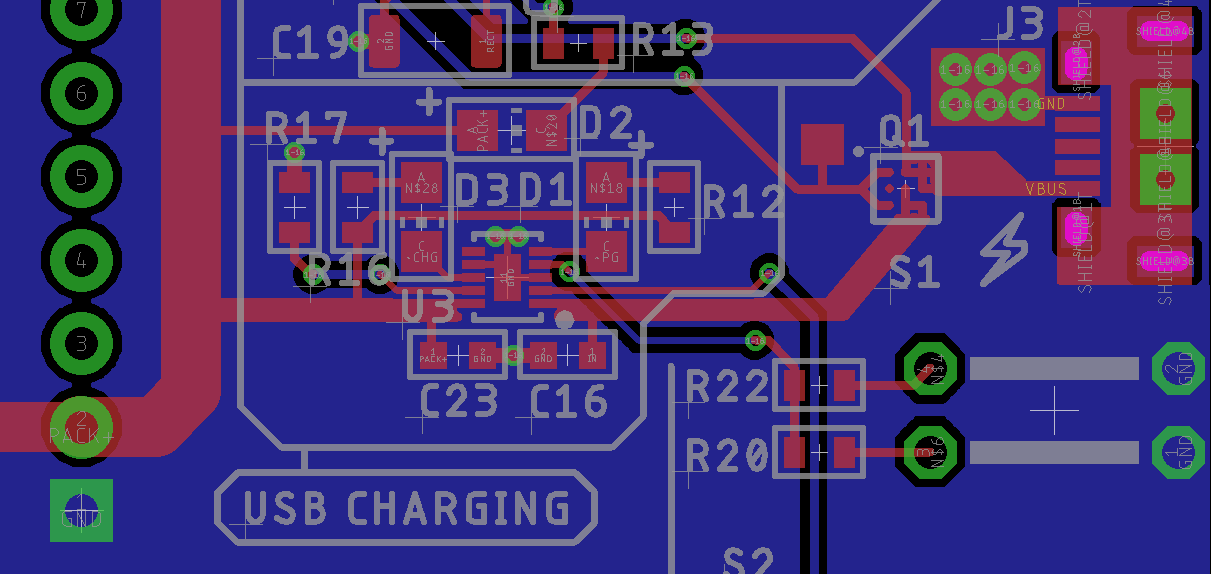Hi!
I've been testing the designed I've made, based on BQ24040 (and some other IC's) and I've stumbled across a problem that I don't seem to find the solution to: the fast charge current is 92mA, although it is set via an external resistor to 800mA.
Power comes for a strong R&S HMC0842 PS set a 5V / 1.5A and is supplied to a DTP603450 Li-Ion battery.
What I've done:
- I've tested the voltage drop across the 10k TS resistor and it is 0.5V, so 50uA is going trough TS as expected
- I've tried multiple ISET resistor values with the same result (fast charge current is not rising more than 92mA)
- I've tried multiple PRETERM resistor values with the same result (fast charge current is not rising more than 92mA)
- I've double and triple checked the datasheet and the schematic
- I've made sure pre-charge is not going on; the battery voltage it's at +3.6V so fast charge should be fully kicked in
Some other things:
- D3 LED (connected to CHG) is also not lighting up
- D1 LED (connected to PG) is lit up permanently while power is connected (when VIN < 4.2V, D1 goes off)
Any idea on where the problem might resign?
The schematic is as following:





